|
|
Strategy & Force Employment
|
Who ever relies on the Tao in governing men doesn't try to force issues or defeat enemies by force of arms. For every force there is a counterforce. Violence, even well intentioned, always rebounds upon oneself.—Tao Te Ching 30
|
Because the United States so dominates the world militarily, our political leaders face the temptation to use force to solve a widening range of problems. Presidents must relish the option of disciplining rogue states and terrorists by hurling Tomahawk missiles from floating sanctuaries off shore and even, on occasion, launching the full force of America's armed might. However, as the quote above suggests, such solutions rarely solve the underlying problems, and often bring unanticipated consequences. This section will explore both the utility and the limits of force in the post-Cold War world.
Back during simpler days, there was one major threat that drove all our force planning—the Soviet Union, with forces largely a mirror image of our own. We used complex computer models to predict the results of future war between the superpowers, and tended to dismiss other threats altogether: "If we can lick the cat," as the saying went, "we can lick the kitten."
Unanticipated Consequences
In Vietnam, unfortunately, we found the danger in such glib arrogance. Weapons and doctrine designed to repel the Red horde in Germany did not prove effective against a shadowy enemy with a long-term planning horizon and a good grasp of the US national psyche.
In the First Gulf War, we subjected the forces of Saddam Hussein to the most intense bombardment since Vietnam. Yet the bulk of his elite troops escaped with their equipment, sustained him in power for another 12 years, and allowed him to eliminate untold thousands of Iraqis who heeded our call for revolution. It is far too early to reach conclusions about the Second Gulf War (other than that its first, military, stage turned out as predicted in A Swift, Elusive Sword. In Kosovo, we attacked with an even greater force advantage than we had in Iraq. Yet, Milosovic's troops survived practically unscathed, and ethnic cleansing proceeded unabated, although this time by our allies, the ethnic Albanians. And the situation in Afghanistan is starting to look more like its pre-9/11 days than like a liberal, secular democracy.
None of this is to deny a role for military force, just to reaffirm the warning of the Tao Te Ching - once one unleashes the dogs of war, it can be difficult to control the directions in which they head. So what are we going to use military force for? And what type of forces—people, ideas, training, and hardware—do we need? Please join us in exploring these vital issues.
(The quotation from the Tao Te Ching is from Stephen Mitchell's translation, Harper & Row, New York, 1988.)
A Swift, Elusive Sword, how the philosophies of Sun Tzu and John Boyd could guide in crafting effective military forces for fourth generation warfare (612 KB PDF file on Belisarius.com).
The Importance of Evolutionary Epistemologies for Exploring the Limits of the Asian-Pacific Nation State, Ole Strömgren, Copenhagen Business School (335KB .pdf), December 2003. Using the OODA loop model to survive and thrive in the Pacific Rim - a novel look at evolving power relationships in the Far East.
Some Good News, by William S. Lind. Did we use Boyd's concepts, maneuver warfare, in the Second Gulf War? The first detailed analysis looks promising.
Grand Strategy, a brief introduction by the editor of Defense and the National Interest.
|
|
|
Books
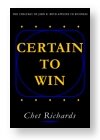
|
|
CERTAIN TO WIN: The Strategy of John Boyd, Applied to Business, by Chet Richards. Boyd's real OODA loop and ancient strategies working for business today. More...
Advance Reviews;
Amazon and B&N
|
| |
|

|
|
RAISING THE BAR, by Donald Vandergriff (U.S. Army, ret.) Published by the Center for Defense Information Press. Read the DNI review. Order from Amazon.
|
| |
|

|
|
SCIENCE, STRATEGY AND WAR, by Col Frans Osinga, RNAF. Read the DNI Review. Order from Amazon or B&N. New! Now in paperback directly from Routledge, $35.95.
|
| |
|
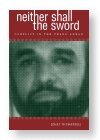
|
|
NEITHER SHALL THE SWORD, by Chet Richards. If you thought A Swift, Elusive Sword was too tame. Read the Introduction and view the Briefing. Podcast review. Available now on Amazon
|
| |
|
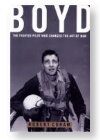
|
|
BOYD: The Fighter Pilot Who Changed the Art of War by Robert Coram
Amazon & B&N.
|
| |
|
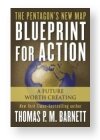
|
|
BLUEPRINT FOR ACTION : A Future Worth Creating, by Thomas P. M. Barnett. Read the DNI review. Buy at Amazon and B&N
|
| |
|
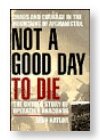
|
|
NOT A GOOD DAY TO DIE: The Untold Story of Operation Anaconda, by Sean Naylor. Read the DNI Review; Amazon and B&N
|
| |
|
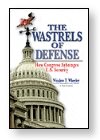
|
|
THE WASTRELS OF DEFENSE: How Congress Sabotages U. S. Security by Winslow Wheeler. You'll be disgusted, then just mad.
Read Comment #527.
Amazon and B&N
|
| |
|

|
|
THE AFGHAN CAMPAIGN, by Steven Pressfield. Read the DNI Review. Amazon and B&N.
|
| |
|

|
|
The Virtues of War by Steven Pressfield
Read the DNI Review.
Amazon and B&N. Now in trade paperback.
|
| |
|
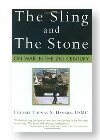
|
|
The Sling and The Stone by Col T. X. Hammes, USMC
Amazon and B&N
|
|
|

